Recent Fire Damage Posts
Stay Warm, Stay Safe: How to Safely Use Space Heaters in Your Home
12/11/2024 (Permalink)
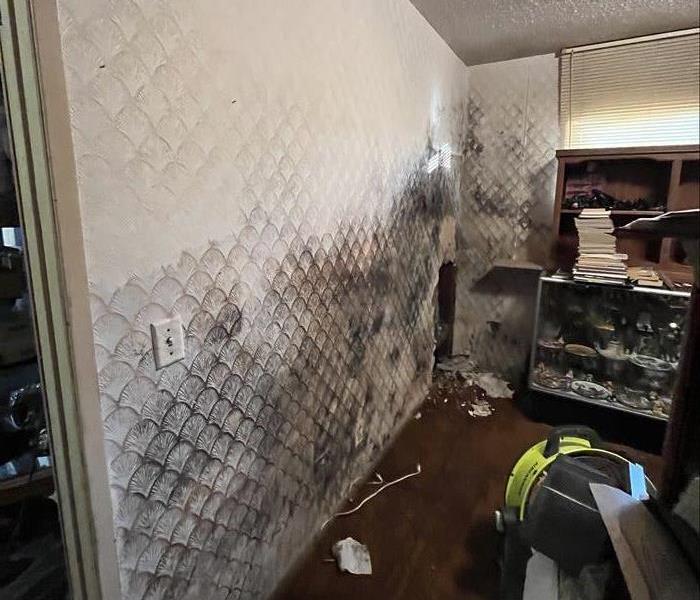 Let’s go over some tips to safely use your space heater and avoid potential risks.
Let’s go over some tips to safely use your space heater and avoid potential risks.
As the weather gets colder, space heaters become a popular way to warm up small areas quickly. While they’re convenient, they can also be dangerous if not used properly. In fact, space heaters are a leading cause of home fires. Let’s go over some tips to safely use your space heater and avoid potential risks.
The Risks of Space Heaters
The main risks are:
- Fire hazards: Space heaters can easily catch nearby objects on fire, like curtains, furniture, or bedding.
- Electrical dangers: Overloaded outlets or old wiring can cause electrical fires.
- Burn injuries: Space heaters can get very hot to the touch, posing a risk, especially to kids and pets.
Now that you know the risks, let’s go over some ways to prevent them.
Safe Ways to Use a Space Heater
While space heaters can be risky, you can easily reduce the danger by following a few simple safety tips:
Pick the Right Space Heater
Not all space heaters are made the same, so make sure to choose one that’s safe to use.
- Look for safety labels: Choose a heater that has been tested and certified by a trusted group like UL or ETL.
- Check for auto shut-off: A good heater will have an automatic shut-off feature if it tips over or gets too hot.
Keep Your Heater in the Right Spot
Where you place your space heater can make a big difference.
- Give it space: Keep your space heater at least 3 feet away from anything that could catch fire, like blankets, rugs, or furniture.
- Use a flat surface: Always place the heater on a hard, flat surface—not on a carpet or soft material.
- Out of the way: Keep it out of high-traffic areas where it might get bumped or knocked over.
Plug It Straight into the Wall
This is an important tip: Never plug your space heater into an extension cord or power strip.
- Wall outlet only: Space heaters need a lot of power, so they should be plugged directly into a wall outlet.
- Don’t overload: Avoid plugging other high-power appliances into the same outlet as your heater.
Turn It Off When You Leave
It’s never safe to leave a space heater on when you’re not around.
- Switch it off when you’re out: Always turn off your heater when you leave the room or go to bed.
- Unplug when not in use: If you’re not using your space heater, unplug it until you need it again.
Timers and Thermostats Are Your Friends
Heaters with timers and built-in thermostats are great for added safety.
- Timers: Set the heater to run for a limited time so it shuts off automatically.
- Thermostats: Adjust the temperature and let the heater turn off when the room reaches your desired warmth.
Why Space Heater Safety Matters
At SERVPRO of Costa Mesa, we’ve seen how quickly fire damage can happen when space heaters aren’t used correctly. By sticking to these safety guidelines, you can lower the risk of fire and enjoy a warm, safe home. If you ever need fire damage restoration, our team is Here to Help®—just give us a call!
Are Dryer Vent Fires Common?
8/14/2024 (Permalink)
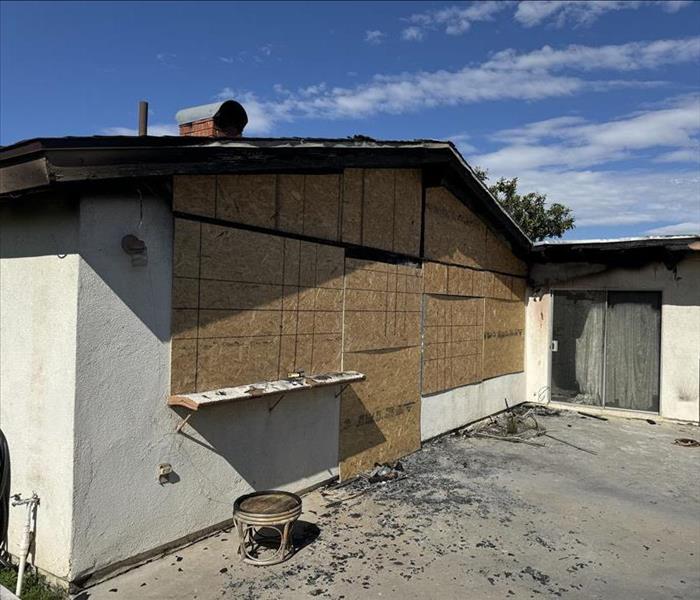 If you need assistance with dryer vent cleaning or have experienced a fire and need restoration services, contact SERVPRO of Costa Mesa today!
If you need assistance with dryer vent cleaning or have experienced a fire and need restoration services, contact SERVPRO of Costa Mesa today!
Dryer vent fires are a serious but often overlooked risk in many homes. For residents of Costa Mesa, CA, understanding how common these fires are and what causes them is crucial to keeping your home safe. In this blog, we’ll explore the frequency of dryer vent fires, what causes them, and how you can prevent them.
The Prevalence of Dryer Vent Fires
Statistics and Facts
According to the National Fire Protection Association (NFPA), between 2010 and 2014, there were an estimated 15,970 home fires involving clothes dryers or washing machines each year in the United States. Of these, 92% involved clothes dryers. These fires resulted in an average of 13 deaths, 440 injuries, and $238 million in property damage annually. This shows that dryer vent fires are a common and serious hazard.
Causes of Dryer Vent Fires
The leading cause of dryer fires is the failure to clean them. Lint and debris can build up in the dryer vent, reducing the airflow and causing the dryer to overheat. Overheating can then ignite the lint, leading to a fire. Other contributing factors include mechanical or electrical failure and improper installation.
How Dryer Vent Fires Start
Lint Accumulation
Lint is a highly flammable material that accumulates in the dryer vent over time. Even if you clean the lint trap after each use, some lint still gets past and builds up in the vent. This buildup restricts airflow, causing the dryer to work harder and overheat.
Clogged Vents
Blocked or clogged dryer vents can cause overheating. When the hot air cannot escape, it increases the risk of igniting lint and other debris trapped in the vent. Regular inspection and cleaning of the vent can prevent this.
Improper Installation
Improper installation of dryer vents can also lead to fires. Using the wrong materials or incorrect vent placement can cause lint buildup and reduce ventilation efficiency. It’s essential to follow manufacturer guidelines and local building codes for installation.
Prevention Tips
Regular Cleaning
Clean the lint trap before and after each use. Additionally, have your dryer vent professionally cleaned at least once a year. For households that use the dryer frequently, more frequent cleanings may be necessary.
Inspect Venting Systems
Regularly inspect the venting system to ensure there are no obstructions or damage. Ensure that the vent is made of rigid or semi-rigid metal, as these materials are less likely to trap lint than flexible plastic or foil.
Proper Installation
Ensure your dryer vent is properly installed. The vent should be as short and straight as possible to allow for efficient airflow. Avoid using screws or bolts that can catch lint and cause blockages.
Avoid Overloading
Do not overload your dryer. Overloading can cause the machine to overheat and increase the risk of fire. Follow the manufacturer’s recommendations for load sizes.
Making Your Home Safer
Dryer vent fires are more common than many people realize, but they are preventable. Regular maintenance and proper installation are key to reducing the risk. These precautions can help protect your home from the dangers of dryer vent fires.
If you need assistance with dryer vent cleaning or have experienced a fire and need restoration services, contact SERVPRO of Costa Mesa. Our team is equipped to handle all aspects of fire prevention and restoration, ensuring your home remains safe and sound. Stay vigilant and proactive in maintaining your dryer vent, and you can significantly reduce the risk of a fire.
Protecting your pets from home fires
4/19/2024 (Permalink)
As proud pet owners, our four-legged companions bring joy, love, and endless moments of happiness to our lives. However, in the midst of creating a safe and comfortable home for our furry friends, we may overlook a critical aspect of their well-being – fire safety. At SERVPRO®, we understand the importance of safeguarding your pets from potential home fires. In this blog post, we'll share essential tips and insights to help you create a fire-safe environment for your beloved pets.
Pet-Proofing Your Home
Start by identifying potential fire hazards within your living space. Ensure that electrical cords are out of reach and secure appliances to prevent curious pets from knocking them over. Investing in flameless candles and pet-friendly space heaters can also minimize the risk of accidental fires.
Fire Emergency Plan
Just like your family, your pets need a designated escape plan in case of a fire emergency. Practice fire drills with your pets, so they become familiar with evacuation procedures. Keep leashes, carriers, and other pet essentials in an easily accessible location, making it easier to grab them quickly during an evacuation.
Pet Identification
In the chaos of a fire, pets can become disoriented or scared, making it challenging to locate them. Ensure your pets are microchipped and have visible identification tags with up-to-date contact information. This small step can significantly increase the chances of a safe reunion in case of separation during an emergency.
Safe Spaces
Designate specific areas in your home where your pets can find refuge in case of a fire. Teach them to go to these safe spaces when they hear the sound of a smoke alarm. Make these areas easily accessible and free from potential fire hazards.
Fire Prevention Tools
Equip your home with smoke detectors and fire extinguishers, paying special attention to areas where your pets spend most of their time. Regularly test smoke alarms and replace batteries to ensure they are in working order. These simple steps can provide early detection and containment of a potential fire.
Pet Rescue Alert Stickers
Place pet rescue alert stickers on windows and doors to inform firefighters of the number and types of pets in your home. This vital information can expedite the rescue process and ensure that every member of your family, including your pets, is accounted for.
Prioritizing the safety of your pets in the event of a home fire is a responsibility that should not be overlooked. By implementing these SERVPRO-approved tips, you can create a secure environment for your furry friends and provide them with the protection they deserve. Stay proactive, stay prepared, and safeguard your home and pets from the unexpected. Your pets will thank you for it.
Understanding Fireproofing and its Importance
12/20/2023 (Permalink)
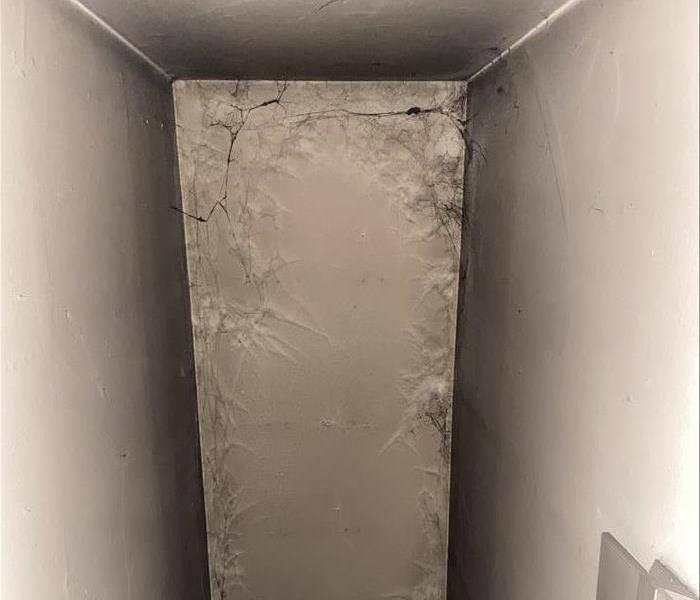 Incorporating fireproofing measures is a proactive step toward enhancing fire safety.
Incorporating fireproofing measures is a proactive step toward enhancing fire safety.
In this blog, we delve into the concept of fireproofing, a critical aspect of protecting your home or business against the devastating effects of fires. We'll explore what fireproofing is and when it is essential to ensure the safety of your property.
Understanding Fireproofing
Fireproofing is the process of applying materials and techniques to protect structures and materials from the destructive effects of fire. The primary goal of fireproofing is to delay or prevent the spread of fire, minimize damage, and buy valuable time for occupants to evacuate safely.
When Is Fireproofing Needed?
Commercial and Industrial Buildings
Fireproofing is particularly crucial in commercial and industrial settings. These structures often house valuable equipment, sensitive materials, and a significant number of occupants. Fireproofing measures, such as fire-resistant coatings and materials, help maintain the structural integrity of the building and reduce the risk of rapid fire spread.
Residential Homes
While residential structures may not require the same level of fireproofing as commercial buildings, fireproofing materials can still offer valuable protection. Fire-resistant coatings on walls, fire-resistant roofing materials, and properly sealed fire-rated doors and windows can significantly enhance home safety.
Historic and Cultural Buildings
Preserving the heritage and cultural significance of historic buildings is essential. Fireproofing can be crucial in protecting these structures from fire damage. Careful restoration and the use of fire-resistant materials can help maintain their historical value while improving fire safety.
High-Risk Areas
Geographic locations prone to wildfires, such as those with a history of forest fires or urban-wildland interface areas, greatly benefit from fireproofing measures. These can include creating defensible space, using fire-resistant building materials, and proper landscaping practices.
Industrial Facilities with Hazardous Materials
Industries that deal with hazardous materials, chemicals, or combustible materials should prioritize fireproofing. Specialized fire-resistant coatings, storage practices, and safety protocols are essential to prevent catastrophic fires and hazardous material release.
Incorporating fireproofing measures is a proactive step towards enhancing fire safety and protecting your property. Understanding when and where fireproofing is necessary is pivotal for protecting your home, business, or historic structures. By implementing the appropriate fireproofing strategies, you can significantly reduce the risk of fire-related damage and improve the overall safety of your environment.
For more in-depth insights on fire safety, property protection, and disaster recovery, continue to follow the SERVPRO® of Costa Mesa blog. And remember, when you require professional fire damage restoration or expert fireproofing services, our SERVPRO® team is here to support you.
Navigating the Fire Claim Process: A Guide for Home and Property Owners
8/21/2023 (Permalink)
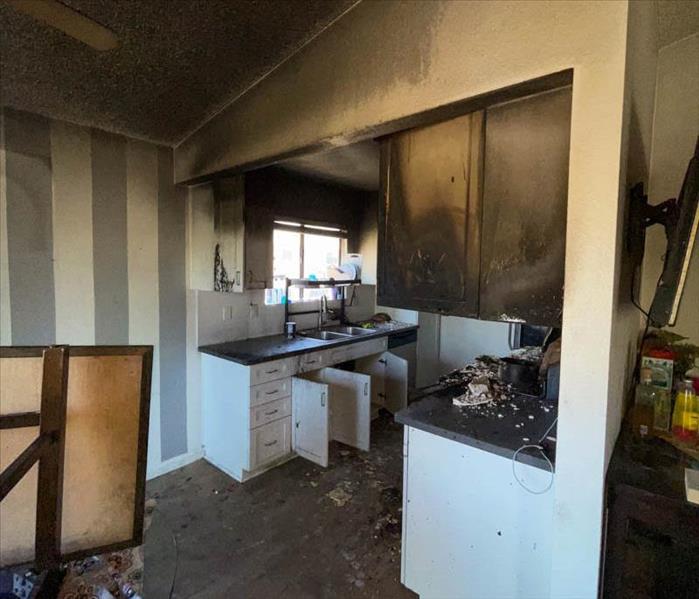 Filing a fire claim can be a daunting task, especially in the aftermath of a fire.
Filing a fire claim can be a daunting task, especially in the aftermath of a fire.
Experiencing a fire in your home or business can be a devastating and overwhelming event. Apart from the emotional toll, you may also face significant financial loss. Making a fire claim is an essential step towards recovering and rebuilding your life after such a tragic incident. In this blog, we will guide you through the process of making a fire claim, ensuring that you receive the compensation you deserve.
1. Contact Your Insurance Company Immediately
After a fire, it is crucial to contact your insurance company as soon as possible. Check your insurance policy for the contact information of your insurance provider or agent. Inform them about the fire and provide them with all the necessary details. Remember to document the date and time of your conversation, as well as the name of the representative you spoke to.
2. Document the Damage
To strengthen your fire claim, it is essential to document the damage caused by the fire. Take photographs and videos of the affected areas, including both the interior and exterior of your property. Make a detailed inventory of damaged possessions, including their estimated value and purchase receipts, if available. This documentation will serve as evidence when filing your claim.
3. Gather Relevant Documents
To ensure a smooth claims process, gather all the relevant documents related to your property and insurance coverage. This may include your insurance policy, personal identification, fire department reports, witness statements, and any receipts or invoices related to repairs or temporary accommodations.
4. Mitigate Further Damage
After the fire, it is important to take immediate steps to prevent further damage. If it is safe to do so, take necessary measures such as boarding up broken windows, covering exposed areas, and securing the premises. Keep records of any expenses incurred in the process, as you may be reimbursed for these costs.
5. Work with Professionals
Engaging the services of professionals can greatly assist you in making a fire claim. Consult a reputable fire restoration company, such as our SERVPRO of Costa Mesa team, to assess and document the extent of the damage. Insurance adjusters or public adjusters can also be valuable resources in navigating the claims process and ensuring that you receive fair compensation for your losses.
6. Temporary Accommodations and Additional Living Expenses
If your property is uninhabitable due to fire damage, your insurance policy may cover the cost of temporary accommodations. Keep receipts for any hotel stays, meals, and other living expenses incurred while you are displaced from your home or business. These costs can often be included in your fire claim.
7. Cooperate with the Claims Process
Throughout the fire claim process, it is important to cooperate fully with the insurance company and any professionals involved. Respond promptly to their requests for information, documents, or interviews. Keep detailed records of all communication, including dates, times, and the name of the person you spoke with.
Filing a fire claim can be a daunting task, especially in the aftermath of a devastating fire. However, by following these steps, you can navigate the process with confidence and increase your chances of receiving the compensation you deserve. Remember to stay organized, document everything, and seek support from professionals when needed. With patience and persistence, you can restore your home or business and move forward after this challenging experience.
Reviving Your Devices: A Guide to Cleaning Electronics After Fire Damage
4/11/2023 (Permalink)
A fire in your home or office can be a devastating event, leaving you with the task of cleaning up the aftermath. Electronics are often among the items affected by fire damage, and it's important to take the necessary precautions when attempting to clean them. In this blog, we'll cover how to clean electronics affected by fire damage.
Step 1: Assess the damage
Before attempting to clean any electronics affected by fire damage, it's important to assess the extent of the damage. This includes checking for smoke residue, soot, and water damage. If the damage is severe or there is any risk of electrical shock, do not attempt to clean the electronics yourself. Instead, seek the assistance of a professional.
Step 2: Disconnect and unplug the electronics
Before cleaning any electronics, it's important to disconnect and unplug them from their power source. This reduces the risk of electrical shock and protects the electronics from further damage.
Step 3: Remove any loose debris
If there is any loose debris or ash on the surface of the electronics, carefully remove it using a soft-bristled brush or compressed air. Avoid using a vacuum cleaner, as the static electricity can damage the electronics.
Step 4: Clean the surface
Next, use a microfiber cloth or a soft, non-abrasive sponge to gently clean the surface of the electronics. You can use a mixture of water and mild dish soap, or a specialized electronics cleaning solution. Avoid using harsh chemicals, as they can damage the electronics.
Step 5: Dry the electronics
After cleaning the electronics, it's important to dry them thoroughly before reconnecting or using them. Use a soft, dry cloth or allow the electronics to air dry completely.
Step 6: Test the electronics
Once the electronics are clean and dry, test them to ensure they are functioning properly. If there are any issues, do not attempt to repair the electronics yourself. Seek the assistance of a professional.
It's important to note that not all electronics can be salvaged after fire damage. If the damage is severe or the electronics have been exposed to water, it may be necessary to replace them.
In conclusion, cleaning electronics affected by fire damage requires caution and attention to detail. Assess the damage, disconnect and unplug the electronics, remove any loose debris, clean the surface with a gentle solution, dry the electronics thoroughly, and test them to ensure they are functioning properly. If the damage is severe or there is any risk of electrical shock, seek the assistance of a professional. With the proper care and attention, you can salvage electronics affected by fire damage and restore them to working condition.
What are Burn Bans?
2/8/2023 (Permalink)
A burn ban is a local order that prohibits outdoor burning. The purpose of a burn ban is to protect people, property, and the environment from wildfire. Fire bans are issued when conditions are so dry that fires can start easily and spread quickly. We hope this article gives you more insight into burn bans.
Burn bans are just that: bans on outdoor burning.
A burn ban is a restriction on the use of outdoor fireplaces, fire pits, and uncertified open-flame devices. Burn bans are issued by state agencies to prevent wildfires during periods of high fire danger. In some cases, counties may also issue their own burn bans.
Issued when unusually hot, dry, and windy conditions.
When unusually hot, dry, and windy conditions increase the risk of wildfires, the local or state government can issue a burn ban. The department monitors weather conditions closely to determine when these factors pose an increased risk for fires. If winds are strong enough to make it difficult for firefighters to contain an existing blaze or start new ones nearby, then authorities will issue a statewide ban on outdoor burning.
Outdoor burning is a major cause of wildfires.
Outdoor burning is a major cause of wildfires in the spring and early summer. The United States Forest Service estimates that more than 90 percent of wildfires are caused by humans, making prevention an important part of wildfire management.
Burn bans are issued by state and local governments when conditions are dangerous for outdoor burning due to high winds, low humidity, and/or warm temperatures. Violators may be fined or face other penalties depending on their jurisdiction.
The length of burn bans varies.
The length of burn bans varies from days to weeks depending on weather conditions. Each county has its own regulations regarding burn bans, but the most common time for a burn ban is during the summer months. The duration of a burn ban may be anywhere from one to fourteen (14) days.
What types of burn bans are there?
There are two types of burn bans: county-issued and governor-issued.
- County-issued burn bans are put in place by local authorities, such as fire departments or city governments. Local authorities may issue these bans if they believe that the current weather conditions could cause fires to spread faster than normal, with greater intensity than usual.
- Governor-issued burn bans are issued by the state government when it feels that there is a high risk of wildfires due to drought conditions or other natural factors. These types of burns can also occur during periods of extreme heat and windy weather conditions where fires would be more difficult for firefighters to control.
Check your local burn ban regulations.
The best way to check what your local burn ban regulations are is to call your local fire service and ask. You should always check the weather forecast before you do any burning of vegetation on your land. You need to be aware of the wind direction, how hot it is going to be, how dry it is, and whether there might be a fire risk or if there is already an active fire ban in place for your area. In addition, if there are any other factors that may affect whether or not you can burn safely (such as having neighbors close by), you should consider these too before starting any fires outside.
The main thing to remember is that burn bans can vary significantly from state to state and even county to county. It's important that you check with your local fire department or government agency before burning anything outside. If you are unsure of what constitutes a burn ban, please call your local fire department.
3 Tips for Removing Cigarette Smoke Odor From Your Home
8/11/2022 (Permalink)
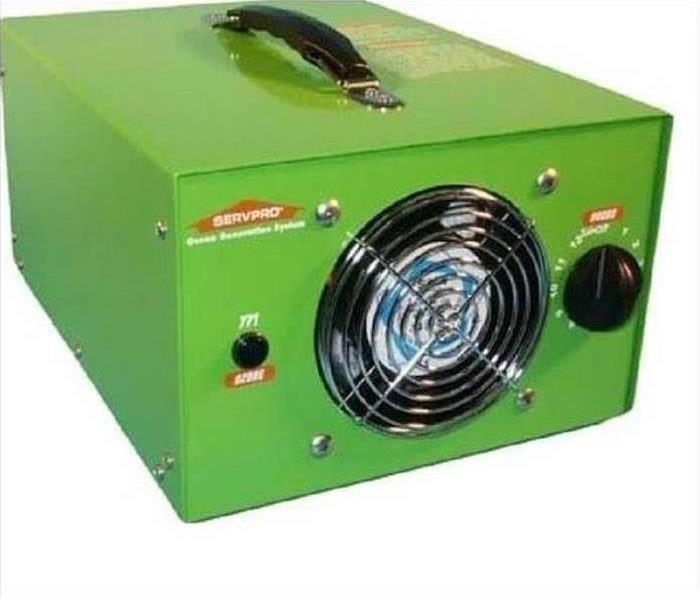 Ozone has been proven to be effective at destroying odor.
Ozone has been proven to be effective at destroying odor.
Tips For Removing Cigarette Smoke Odor
The Centers for Disease Control and Prevention reported in 2019 that 34.1 million adult Americans admitted to smoking at least 100 cigarettes in their lifetime. The health risks of the practice and its secondhand leavings aside, a major problem with lighting up in buildings is that it can leave behind a long-lasting, unpleasant odor. Regardless of whether it is the result of the habit of others or yourself, you may not want such a smell to linger in your home.
There is the option of contacting a professional cleanup service in Mesa Verde, CA, for home deodorization, but it is not the only choice available. Here are some tips for eliminating any scent left behind by cigarette smoke.
1. Purify and Circulate Air
Promoting circulation and purification of the air in your home is one part of home deodorization. Some actions you can take include:
- Opening doors and windows
- Using fans
- Using an air purifier with a HEPA filter
- Placing bowls of vinegar (white or apple cider) and active charcoal in different areas for odor absorption
- Regularly changing out HVAC filters
2. Use an Ozone Generator
Ozone has been proven to be effective at destroying odor. What happens is ozone generators make activated oxygen molecules that oxidize smoke particles. It is important to be aware that the substance may result in negative health effects and damage to some items.
3. Clean Exposed Materials
The stench of cigarette smoke can cling to objects. Washing hard surfaces with a water and vinegar solution can help get it off. With textiles, you can wash removable objects like couch covers with vinegar in the washing machine. For those things not so easily cleaned, like furniture, you can sprinkle baking soda over them, let it sit for a while and then vacuum it up. You may also want to steam clean carpets after this, as well as furniture and curtains if you have access to an attachment.
Home deodorization may become an extensive project depending on how long the issue has gone unaddressed. Preventative measures, like smoking outside and encouraging others to do the same are the best way to avoid having to go through it.
4 Sources of Fire Damage That Are Not Structural
5/15/2022 (Permalink)
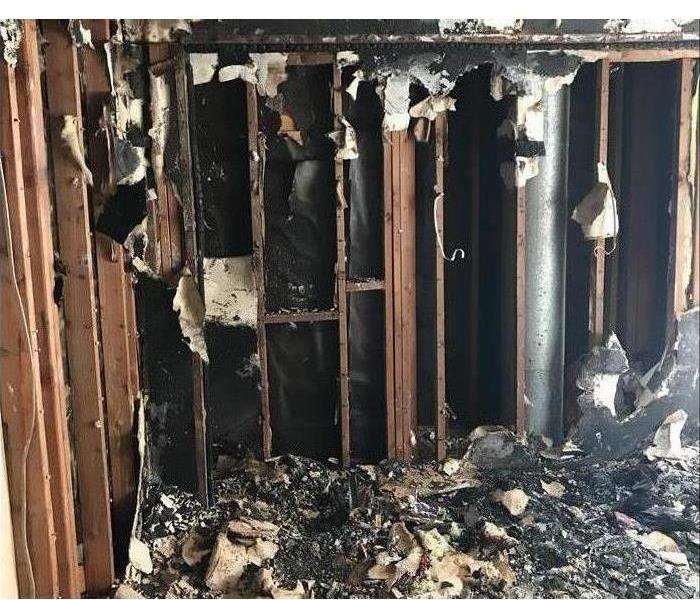 Fire damage in Downtown Costa Mesa, CA.
Fire damage in Downtown Costa Mesa, CA.
Four Non-Structural Sources Of Fire Damage
When most people think of a commercial fire, they probably picture large areas of the building being burned down, including major structures such as the roof, walls and electrical systems. Other damages that demand attention also could be present. Smoke cleaning, for example, is often a necessity to rid the interior of unpleasant and lingering odors associated with a fire.
1. Soot Damage
In most cases, damage from soot can be seen on walls. This can even be the case in areas of the building that were not close to the fire. Other telltale signs might also be present:
- Dark discoloring on surfaces
- The appearance of grit on walls
- A pervasive smell emanating from objects
Technicians can also perform tests that measure the level of smoke damage. This is the best way to get a good sense of the damage throughout the building. At this point, the smoke cleaning process will focus on specific areas of the building.
2. Smoke Damage
This is likely to be present in most fires and it can even be smelled in areas that do not have much soot accumulation. Regular cleaning methods do not usually take care of a stubborn smell associated with a fire. Trained technicians use special methods to eradicate the smoke odor.
3. Water Damage
A trained and certified fire restoration company in Downtown Costa Mesa, CA, will also have to address water issues after a commercial fire. This is because fire fighting efforts use water and other liquid components to stop a fire from spreading.
4. Personal Items
A fire also damages many peripheral items, including personal clothes and other objects. The best methods for cleaning these items are used to make sure they are cleaned of soot and odors. In some cases, items are not salvageable and must be replaced
Professional smoke cleaning is often necessary after a commercial fire. Trained technicians are best equipped for this process.
How Renter's Insurance Covers Fire Damage
4/18/2022 (Permalink)
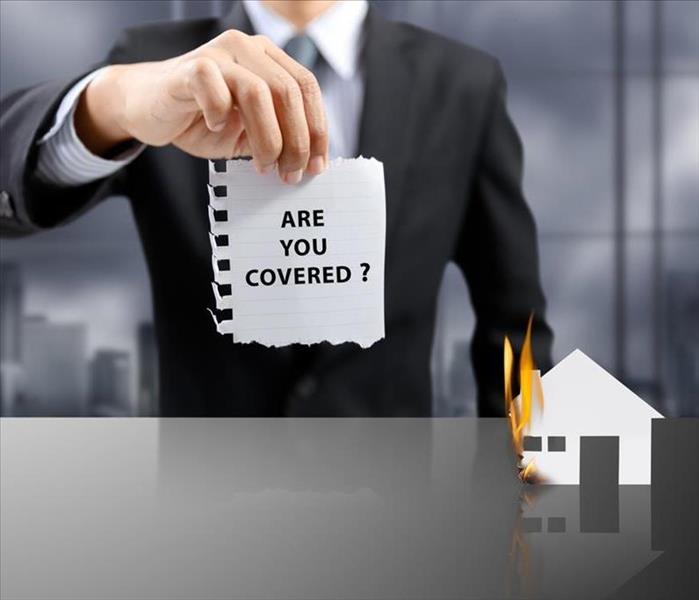 The landlord's property insurance policy protects the rental unit against fire damage, but it does not cover the renter's personal belongings.
The landlord's property insurance policy protects the rental unit against fire damage, but it does not cover the renter's personal belongings.
How Fire Damage Is Covered By Renter's Insurance
Many renters think they don't need renters insurance because they don't own the property they live in. However, there are several ways that this insurance protects renters.
Personal Property
The landlord's property insurance policy covers fire damage to the rental unit, but it does not provide coverage for the personal property of the renter. Personal property refers to the various personal items owned by the renter and stored in the rental dwelling:
- Clothing
- Electronics
- Computers
- Small appliances
- Furniture
Most types of personal property are covered by renter's insurance, but some may be excluded or come with specific limits. Most policies provide replacement value coverage, but some may be actual cash value policies.
Liability
Renters insurance also provides liability protection. This provides coverage for damages you are legally liable for to another person because of your negligent actions. For example, if you negligently started a fire in your rental unit and smoke from that fire caused damage to your neighbor's clothing, your insurance would pay for cleaning or replacing your neighbor's property, as long as you are found to be legally liable for the damages.
Medical Payments to Others
Unlike liability coverage, medical payments to others is a no-fault coverage. This means that you don't have to be legally liable for the injury to another person for their medical bills to be covered. If you have a guest over and that person suffers smoke inhalation due to a fire in your apartment, this coverage may apply whether or not your negligence caused the fire.
Loss of Use
If you have to move out of your apartment because of fire damage. Loss of use coverage may apply to expenses such as renting a hotel room during fire restoration.
Renters insurance provides multiple protections for renters who experience fire damage. An insurance professional in South Coast Metro, CA, can provide you with more information about this coverage.
Watch Out for the Top 3 Leading Causes of a Home Fire
2/2/2022 (Permalink)
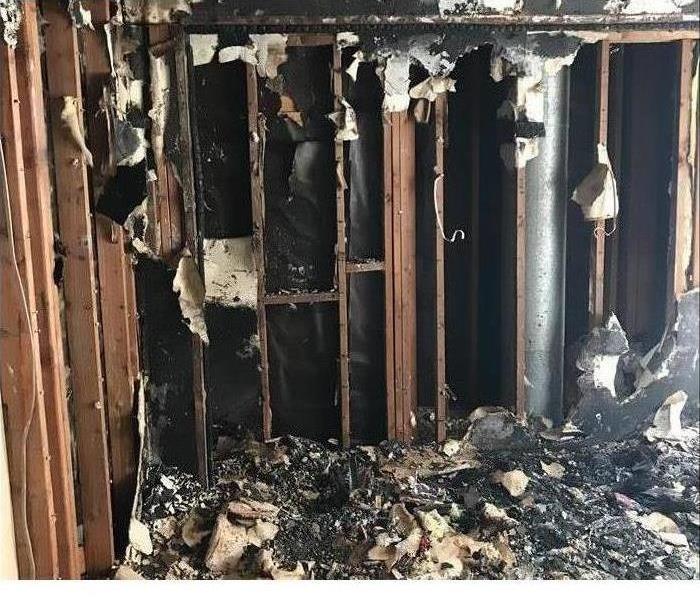 This home suffered from a Fire. The fire took the home down to the studs. SERVPRO of Costa Mesa responded and began clean up immediately.
This home suffered from a Fire. The fire took the home down to the studs. SERVPRO of Costa Mesa responded and began clean up immediately.
Keep An Eye Out For The Top 3 Home Fire Causes.
For most people, their house is much more than just a building that they live in; it is a home where they make precious memories and feel the most secure. Going through a home fire that damages your home and destroys sentimental belongings can be extremely devastating. Although a fire restoration company can help reconstruct your home in Mesa Verde, CA, and deal with the fire cleaning, you will likely still experience some loss. It is important to be educated on how house fires often happen so you can prevent this terrible situation from every happening to you. Here are the top three leading causes to watch out for.
1. Cooking Equipment
Between oil spill, electrical appliances, open flames, and extremely hot temperatures, your kitchen is just a fire waiting to happen if you’re not careful. Keep your family and your home safe by making sure you keep the following tips in mind:
- Never leave cooking food unattended
- Keep flammable objects off your stovetop
- Check the wires on your appliances
- Keep oil splatter to a minimum
- Keep a metal lid or pan close by when frying
2. Smoking Indoors
While many people choose to smoke outdoors to keep smells and lingering smoke out of their homes, preventing a home fire is another good reason to add to the list. In fact, smoking in bedrooms is the top cause of house fire fatalities. Leftover cigarette butts and embers that accidentally fall onto the ground or furniture can quickly catch flame.
3. Heating
Portable space heaters, furnaces, boilers, and fire places are all examples of possible sources of a heating fire. Make sure to keep up on maintenance tasks for all of these types of equipment, and always keep flammable objects at a safe distance away.
Fortunately, there are many steps and precautions you can take to prevent a home fire. Start by focusing on these three top fire causes to help keep your family and home safe all year long!
3 Benefits of Tarping Over a Fire-Damaged Roof
1/2/2022 (Permalink)
Three Advantages of Tarping a Fire-Damaged Roof
A fire may result in damage to the roof of a structure. After the blaze has been extinguished, plastic tarps can protect the roof surface and shield the interior of a structure until roof repair is complete. A building owner or facility manager may be able to tarp over a roof, but mitigation companies that offer tarp services can make sure that water will not work its way under a tarp and prevent covers from blowing away. Here are three benefits of tarping as the first stage in the fire cleanup process.
1. Preventing Leaks
A fire can cause holes to form in a roof that may lead to leaks. Precipitation shortly after a fire can exacerbate water damage in a structure. This secondary damage is preventable with tarping. Failure to cover a damaged roof may cause a commercial property insurance provider to limit coverage.
2. Keeping Out Debris
Debris can also enter a structure through breaches in the roof. Tarps can help to keep out leaves and animals that may enter and cause additional damage in a structure. Property owners may also want to board up broken windows, damaged doors, or holes in walls to keep out trespassers. All of these measures can help to limit the extent of fire cleanup.
3. Proof of Mitigation
An insurer may be more likely to cover damage if a property owner can provide evidence of mitigation. Be sure to document roof damage prior to tarping and be prepared to share this footage with an adjuster.
Tarping a damaged roof is a protective measure. Covering holes caused by fire damage also indicates that a building owner is doing everything that he or she can to mitigate damage prior to fire cleanup and roof repair. The best way to protect a roof is to hire a professional provider of tarp services in Fairview Park, CA.






 24/7 Emergency Service
24/7 Emergency Service




